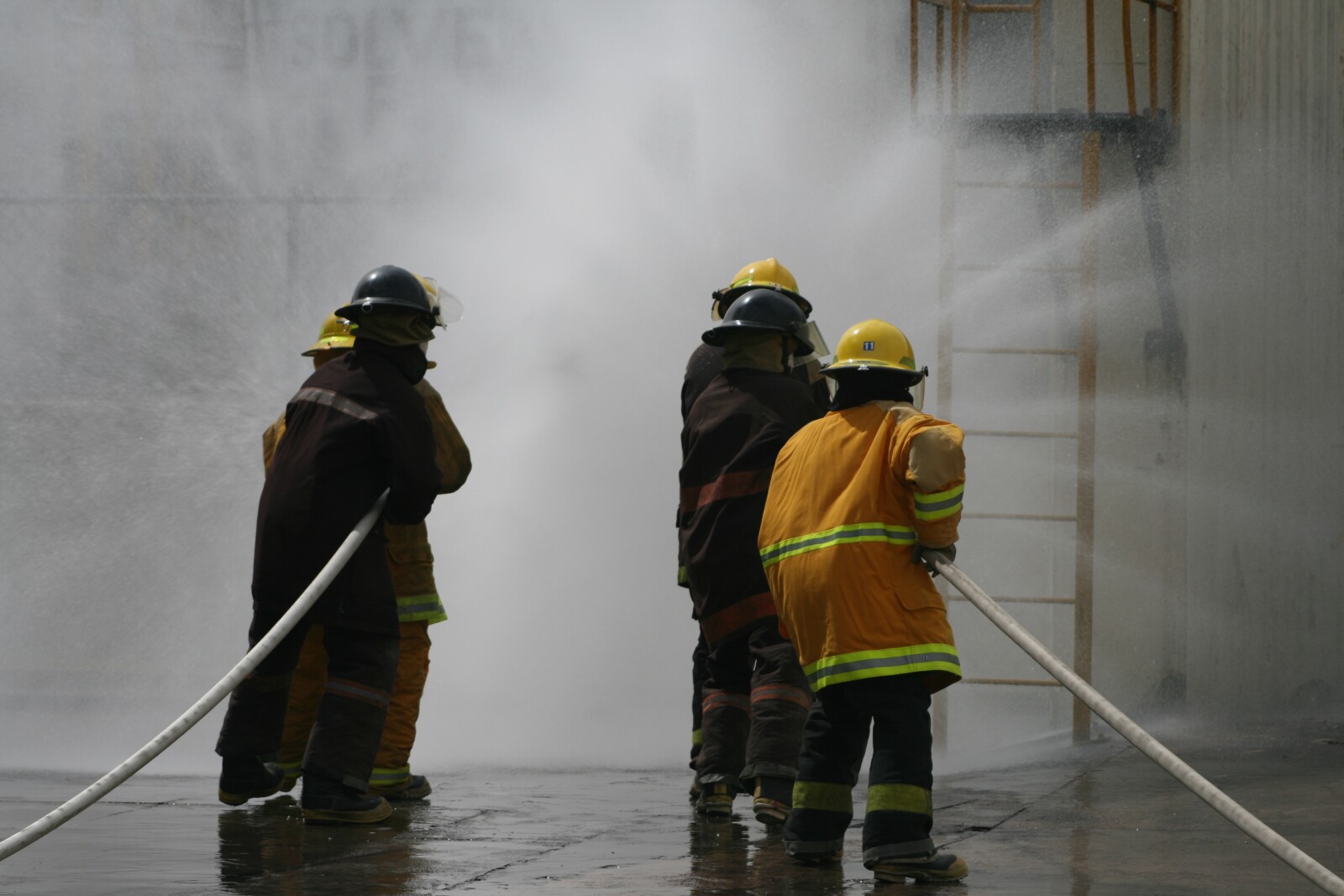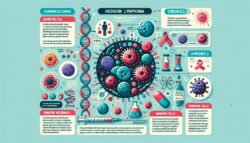Breast Cancer Due to AFFF
Breast cancer is a multifaceted disease with various risk factors, and recent research posits a potential connection to Aqueous Film-Forming Foams (AFFF). Used extensively in firefighting, AFFF contains per- and poly-fluoroalkyl substances (PFAS), such as PFOS and PFOA, which are environmentally persistent with suspected carcinogenic properties. Concerns have been raised about the link between these substances and the incidence of breast cancer, particularly among populations with high exposure levels, such as military personnel and firefighters. This introduction explores the evidence suggesting that exposure to AFFF may contribute to the development of breast cancer, examining the biological pathways implicated and the broader implications for occupational safety and public health policy. It underscores the importance of understanding the risks associated with AFFF and the necessity for stringent regulation and exploration of safer alternatives.

Key Takeaways
- Breast cancer in men can be caused by gene mutations such as BRCA1 and BRCA2, as well as other mutations like PALB2, CHEK2, TP53, and PTEN.
- Exposure to toxic chemicals like perfluoroalkyl and poly-fluoroalkyl substances (PFAS) from AFFF may contribute to male breast cancer.
- Studies suggest that PFAS exposure, including PFOA and PFHxS, maybe a potential risk factor for breast cancer.
- PFAS, as endocrine disruptors, can interfere with the functioning of the endocrine system and may contribute to the development of breast cancer.
Understanding AFFF Components
Aqueous Film Forming Foam (AFFF), a fire suppressant used extensively by military and civilian firefighters, contains a complex mixture of per- and poly-fluoroalkyl substances (PFAS) known for their toxicity and persistence in the environment. Understanding AFFF toxicity requires a comprehensive analysis of its chemical constituents and the AFFF manufacturing process. PFAS, the primary agents in AFFF, are synthetic chemicals characterized by their resistance to heat, water, and oil. During AFFF production, fluorosurfactants, such as perfluorooctane sulfonate (PFOS) and perfluorooctanoic acid (PFOA), are created. These compounds confer the foam's fire-extinguishing properties but also pose serious environmental and health risks due to their bioaccumulative nature and potential to disrupt endocrine functions, underlining the critical need for stringent regulatory oversight and safer alternatives.
PFAS: A Cancer Connection

Research indicates a correlation between PFAS exposure and an elevated risk of developing breast cancer due to the disruptive effects these chemicals have on hormonal regulation and cell growth. The presence of PFAS compounds in Aqueous Film-Forming Foams (AFFF) has been scrutinized for their impact as endocrine disruptors on reproductive health.
| PFAS Compound | Association with Breast Cancer | Preventive Measures |
|---|---|---|
| PFOA | Positive correlation | Limit exposure |
| PFOS | Negative to negligible | Ongoing research |
| PFHxS | Potential risk factor | Monitoring levels |
| PFNA | Negative association | Regulatory control |
Efforts towards PFAS and breast cancer prevention include rigorous environmental regulatory actions and advocating for safer chemical alternatives. Understanding the intricate mechanisms by which PFAS influence cellular pathways remains pivotal in mitigating their potential health risks.
AFFF and Endocrine Disruption
The endocrine-disrupting properties of Aqueous Film-Forming Foams (AFFF) are implicated in the potential increase in breast cancer risk due to their interference with hormonal balances in the body. Perfluoroalkyl and poly-fluoroalkyl substances (PFAS), key components of AFFF, have been identified as endocrine disruptors capable of mimicking or blocking hormones, thereby contributing to carcinogenic processes. The perturbation of hormonal pathways can lead not only to breast cancer but also to reproductive issues.
Scientific scrutiny reveals that these chemicals may affect mammary gland development and cellular differentiation. This disruption can potentially initiate or promote the growth of hormone-sensitive tumors. Continued exposure to AFFF, particularly among firefighters, underscores the pressing need for further investigation and regulation to prevent endocrine disruption and mitigate breast cancer risk.
Men’s Breast Cancer Risks

Several risk factors contribute to the development of breast cancer in men, including exposure to AFFF-containing PFAS, which can alter hormonal balances and increase susceptibility to the disease. Clinical evidence suggests that PFAS may function as endocrine disruptors, leading to an elevated risk of breast carcinogenesis. Men's breast cancer treatment typically involves a multidisciplinary approach, including surgery, radiation therapy, chemotherapy, and hormone therapy, depending on the tumor subtype and stage.
Concerns regarding AFFF exposure in children have also been raised, as early-life contact with PFAS could potentially imprint long-term health effects. For men, particularly those with occupational AFFF exposure, vigilance, and regular screening are prudent to facilitate early detection and improve prognostic outcomes.
Military Bases and AFFF

Military personnel and their families may face an elevated risk of breast cancer due to persistent AFFF contamination on numerous United States military bases. Using aqueous film-forming foam (AFFF) in firefighting exercises and responses has led to significant environmental concerns, particularly regarding the carcinogenic potential of PFAS compounds found in the foam.
- Military Base Contamination: Prolonged AFFF usage has resulted in PFAS leaching into groundwater, posing long-term health risks for base inhabitants.
- Firefighting Foam Disposal: Stringent protocols for AFFF disposal and management are imperative to mitigate further environmental impact and human exposure.
- Health Surveillance: Continuous health monitoring of those exposed to AFFF on military installations is critical for early detection and intervention in cases of breast cancer.
This clinical perspective underscores the urgency of addressing AFFF-related contamination and its implications for public health.
Firefighter Gear and PFAS

Firefighters routinely face exposure to perfluoroalkyl and poly-fluoroalkyl substances (PFAS) not only through AFFF but also via their protective gear, which can release these hazardous chemicals into the environment over time. The integration of PFAS into firefighting equipment is a critical concern for occupational health, as these substances are resistant to heat and chemical reactions, making them pervasive in environments where firefighters operate. The emphasis on firefighter safety precautions necessitates a reevaluation of gear composition to mitigate PFAS exposure risks. Evidence suggests that chronic exposure to PFAS may contribute to the pathogenesis of various cancers, including breast cancer. This underscores the importance of developing alternatives that do not compromise the protective qualities of gear while ensuring the well-being of firefighting personnel.
Legal Support for Victims
Victims of breast cancer attributed to AFFF exposure frequently seek legal support to pursue compensation for their suffering and losses. The specialized field of environmental tort law provides essential avenues for redress, often through complex litigation strategies grounded in scientific and medical evidence. Legal assistance for these victims involves a meticulous process of proving the causation between AFFF exposure and the onset of breast cancer, which necessitates a deep understanding of both legal precedents and the biochemical mechanisms of PFAS-related carcinogenesis.
- Case Evaluation: Comprehensive review of medical documentation and exposure history to establish a connection between AFFF and breast cancer.
- Litigation Support: Access to expert witnesses and toxicologists who can provide testimony on the carcinogenic properties of PFAS compounds.
- Compensation Recovery: Assistance in obtaining financial compensation for medical expenses, lost wages, and emotional distress through settlements or court judgments.
Support resources for victims include networks of legal experts specialized in environmental law and advocacy groups dedicated to raising awareness and providing assistance.
Filing Breast Cancer Claims
Individuals who have developed breast cancer potentially linked to AFFF exposure may be entitled to pursue legal claims against the manufacturers of these firefighting foams. Filing compensation claims involves a detailed review of personal and occupational histories, including documented AFFF exposure and medical diagnosis of breast cancer. With a growing breast cancer awareness, there is an emphasis on the importance of understanding the risk factors associated with occupational chemical exposure.
Evidence-based approaches are critical for substantiating claims, where epidemiological data and peer-reviewed studies may support the causal relationship between AFFF exposure and breast cancer development. Claimants must navigate complex legal processes, often seeking specialized legal representation to address the technical details of their exposure and subsequent health consequences.
AFFF Health Risk Overview
AFFF's chemical properties have significant implications for human health, with studies linking its components to an increased risk of breast cancer and other serious conditions. The primary concern stems from the presence of per and poly-fluoroalkyl substances (PFAS) in AFFF formulations, which have been associated with various adverse health effects.
- Carcinogenicity: Long-term AFFF exposure can lead to the accumulation of PFAS in the body, increasing the likelihood of developing cancers, notably breast cancer.
- Endocrine Disruption: PFAS are known endocrine disruptors, which may alter hormone regulation and contribute to the pathogenesis of breast cancer.
- Prevention Strategies: Implementing AFFF exposure prevention measures, such as using alternative firefighting agents and personal protective equipment, is crucial to reduce health risks among exposed individuals.
Environmental Contamination Concerns
The widespread use of aqueous film-forming foam (AFFF) has led to significant environmental contamination, with PFAS chemicals infiltrating groundwater and surface water, posing risks to ecosystems and human health. Environmental testing has become a crucial tool in quantifying the extent of pollution and identifying areas where PFAS concentrations may exceed regulatory thresholds.
Rigorous health effects assessments are conducted to understand the implications of PFAS exposure on human health, particularly its carcinogenic potential. These assessments involve a comprehensive review of toxicological data, exposure levels, and epidemiological studies, which collectively inform risk management strategies. The technical detail of these evaluations ensures that mitigation measures are evidence-based and effective in curtailing the impact of AFFF on the environment and public health.
AFFF’s Ecological Impact
Contaminating waterways and ecosystems, aqueous film-forming foam (AFFF) poses significant ecological risks due to its persistent and bioaccumulative nature. The introduction of AFFF into the environment, particularly into marine systems, has been shown to have harmful effects on various species, disrupting the ecological balance and threatening biodiversity.
- AFFF's impact on marine life: Persistent compounds in AFFF accumulate in the tissues of aquatic organisms, leading to toxicity, reproductive issues, and endocrine disruption, ultimately compromising the health of marine ecosystems.
- AFFF disposal methods: Proper disposal methods are critical to mitigate environmental contamination; however, current approaches such as incineration can produce toxic byproducts, and landfilling may result in leaching into groundwater.
- Mitigation strategies: Developing more stringent guidelines for the use and disposal of AFFF, exploring biodegradation opportunities, and identifying safer alternatives can reduce ecological damage.
Firefighting Foam Applications

In light of AFFF's ecological impacts, it is essential to examine its primary use in firefighting, particularly for extinguishing complex flammable liquid fires in various emergency scenarios. Aqueous Film Forming Foam (AFFF) has been a staple in industrial settings, owing to its effectiveness in rapidly suppressing fires fueled by hydrocarbons such as oil and gasoline. The high efficiency of AFFF is attributed to the formation of an aqueous film that isolates the fuel from oxygen, thus ceasing combustion.
However, the firefighting foam toxicity associated with its use has raised significant health concerns. The presence of PFAS in AFFF formulations contributes to its effectiveness but also poses a threat to both human health and the environment. The technical challenge now is to balance the critical need for effective fire suppression with the imperative to mitigate toxic exposure risks.
AFFF Alternatives
One must consider the development of safer firefighting alternatives to AFFF, as they present a crucial step toward reducing the risk of breast cancer linked with PFAS exposure. The link between AFFF and endocrine disruption underscores the need for substitutes that mitigate potential health hazards.
- Fluorine-Free Foams (F3): These contain no PFAS, hence significantly lowering the risk of hormonal imbalance and associated cancers.
- Water Mist Systems: Utilize fine water sprays that cool the fire and displace oxygen, minimizing toxic exposure.
- Gel-Based Agents: These agents can form a suffocating blanket over the fire, cutting off the fuel source without PFAS involvement.
These afff alternatives are under ongoing research and refinement to ensure their effectiveness matches that of AFFF while prioritizing human health and environmental safety.
AFFF-Related Legal Actions

Following the recognition of safer firefighting alternatives, affected individuals are increasingly pursuing legal actions against AFFF manufacturers to seek recompense for the health issues attributed to PFAS exposure. These AFFF-related lawsuits are grounded in robust evidence linking PFAS compounds, such as PFOA and PFOS, to various health conditions, including breast cancer. Litigants are demanding compensation for victims who have suffered due to the negligent release of these hazardous chemicals into the environment, which has led to direct and occupational exposure. The technical detail of the legal claims often revolves around the manufacturers' alleged failure to warn about the dangers of PFAS and the subsequent need for medical monitoring, treatment costs, and other damages related to the diagnosed illnesses.
Global AFFF Regulations
How have global regulations adapted in response to the growing concerns over AFFF's impact on health, including its links to breast cancer? As the evidence for AFFF-related endocrine disruption mounts, international bodies are increasingly scrutinizing the use of firefighting foams containing harmful PFAS.
- Restriction and Phase-Out: Many countries have introduced regulations to restrict or phase out the use of PFAS-containing AFFF, aiming to reduce the risk of contamination and associated health hazards.
- Legislation Updates: Legislative frameworks are being updated to reflect the latest scientific findings on PFAS, including their role in endocrine disruption and the potential to increase breast cancer risk.
- Enforcement and Compliance: Regulatory agencies are enforcing stricter compliance with the new global AFFF regulations, ensuring that alternatives are sought and best practices for health and safety are implemented.
Frequently Asked Questions
How Can Individuals Who Were Exposed to AFFF Decades Ago Monitor Their Health for Early Signs of Breast Cancer?
Individuals with historical exposure to environmental hazards should engage in vigilant exposure tracking and regular health screenings. Incorporating genetic counseling can provide valuable insight into personalized cancer risk profiles. From a clinical perspective, evidence-based interventions, including mammography and MRI, are advised to detect early signs of breast cancer. Technical detail-oriented approaches ensure thorough monitoring, optimizing the chances of early detection and effective intervention in high-risk populations.
Are There Any Dietary or Lifestyle Changes That Can Mitigate the Effects of Past AFFF Exposure on Breast Cancer Risk?
To mitigate cancer risk, evidence suggests that dietary and lifestyle modifications can be beneficial. Chemical avoidance, particularly of known carcinogens, is paramount. Additionally, increasing antioxidant intake through a diet rich in fruits, vegetables, and whole grains may offer a protective effect against cellular damage. Such interventions, grounded in clinical research, offer a proactive approach to reducing the potential impact of past environmental exposures on health outcomes.
What Kind of Support Services Are Available for Families of Men Who Have Developed Breast Cancer Potentially Linked to AFFF Exposure?
Support services for families of men with breast cancer include family counseling to address emotional and psychological impacts. Legal assistance may also be available to navigate potential compensation claims for those exposed to harmful substances. These services often employ evidence-based approaches, providing technical detail on cancer management and the legal aspects of exposure-related health conditions. A multidisciplinary team of professionals ensures comprehensive support for affected families.
How Can Communities Advocate for Better Health Monitoring and Support Systems for Those at Risk of Breast Cancer Due to AFFF Contamination?
Communities can champion comprehensive care through collective calls for community legislation and legal advocacy. By demanding enhanced epidemiological examinations and endorsing evidence-based health interventions, they ensure robust risk reduction. Technical details of toxicological trends must inform these efforts, leading to legislative leverage that underpins proactive policies. Such strategic support systems are vital for vigilance against potential pathogenic pollutants, and optimizing outcomes for at-risk populations.
Are There Any Ongoing or Planned Studies Investigating the Long-Term Health Outcomes for Children and Adolescents Who Grown Up in Areas With AFFF Contamination?
Current investigations focus on the long-term health outcomes for youth in areas with documented AFFF contamination. These studies integrate contamination levels and exposure mapping to ascertain the potential impact on developing systems. Methodologies emphasize longitudinal data to track health changes over time, with an evidence-based approach to correlating environmental exposure with subsequent health events. Results are pending, but these efforts are critical in understanding the broader implications of AFFF-related contamination on public health.
How Breast Cancer Risk Factors Impact Settlement Amounts
Breast cancer, a complex and multifactorial disease, arises from an interplay of genetic, hormonal, environmental, and lifestyle influences. Established risk factors for breast cancer include gender, with women being at higher risk; age, as the incidence increases with advancing years; family history, indicating a genetic predisposition when close relatives have been diagnosed; and hormonal factors, such as early menstruation, late menopause, and hormone therapies. Additionally, lifestyle choices like alcohol consumption, obesity, and lack of physical activity are associated with a heightened risk of developing the disease.
Environmental exposure to carcinogens is also a significant concern, and it is within such a context that Aqueous Film-Forming Foams (AFFFs), used extensively for firefighting and training by military and civilian operations, have come under scrutiny. AFFFs contain per- and polyfluoroalkyl substances (PFAS), which are chemicals linked to several cancers, including breast cancer. Studies suggest that PFAS act as endocrine disruptors and may contribute to cancer risk by affecting growth and development of tissues, including the mammary glands.
The potential connection between exposure to AFFFs and the development of breast cancer can significantly influence settlement amounts in lawsuits related to AFFFs. When assessing damages, factors like the severity of illness, the cost of medical treatment including surgery, chemotherapy, and radiation, the impact on quality of life, loss of income, and the strength of the evidence linking AFFF exposure to breast cancer are all considered. Additionally, punitive damages may be sought if there is evidence that manufacturers of AFFFs were aware of the risks but failed to adequately warn users.
Settlements in such lawsuits may also reflect the scientific certainty surrounding the causal relationship between PFAS exposure and breast cancer, which if established with greater confidence could lead to larger settlements. Legal precedents, jurisdictional variances, and individual case specifics further influence settlement figures. Therefore, the intersection of breast cancer causation with AFFF-related litigation continues to represent a developing and consequential arena where science, law, and individual health experiences converge, informing the pursuit and determination of just compensation for affected individuals.




